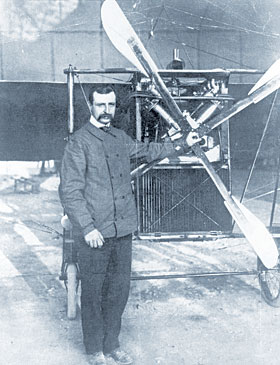Appeal of aviation theme in watches is more than a flight of fancy
Roula Khalaf, Editor of the FT, selects her favourite stories in this weekly newsletter.
According to some industry observers, pilots’ watches accounted for 10 per cent of all luxury watch sales last year.
During peace time, pilots’ watches have seldom been more popular, as buyers in mature watch markets continue to show a preference for classic designs over contemporary equivalents.
Many modern pilots’ watches reflect designs from the golden age of aviation in the first half of the 20th century, while their association with adventure is a lure that watch buyers find hard to resist.
But few pilots’ watches sold today will ever be used to calculate speed, distance, fuel consumption or, as some are able to monitor, drift angle – a complex measure of the angle between heading and track – but the knowledge that they can is a fillip to sales.
In recent years, this surge in popularity has encouraged several brands to refocus their attention on pilots’ watches; others to introduce a collection for devoted buyers of pilot watches; and others still to take their first steps into the market.
Shortly after taking the helm at Zenith in 2009, Jean-Frédéric Dufour discovered the brand owned the licence for using the word “pilot” on a watch dial.
“I checked all the names we had registered and I found that we had forgotten this,” he says. “It was the very first step. I told myself, ‘we have so much legacy, we have the name, we have the design, we have the history, we have the testimonials from Louis Blériot – so why aren’t we carrying the collection in our line?’”

Louis Blériot wore a Zenith watch when he completed the first cross-Channel flight in 1909.
In an attempt to compete for pilot-watch dollars, Zenith has tapped into its aviation heritage with a collection of watches that, according to Mr Dufour, accounts for 26 per cent of Zenith’s sales.
Long-time pilots’ watch manufacturer IWC frequently revisits its Pilot Watch family of models, while Breitling has built a brand around its aviation links.
Its activities at Baselworld this week will centre on the 30th anniversary of its flagship Chronomat pilots’ watch.
The rookie by those standards is Bremont, the British brand that has staked its future almost entirely on the enduring qualities of pilots’ watches.
It launched its first watch in 2007 and in the intervening years has become a watchmaking success story and a flagship for British industry.
Last year, the company opened a watchmaking facility in Henley-on-Thames to the west of London, and won the Global Connections Competition, a contest organised by HSBC to find Britain’s most innovative and forward-thinking companies.
In January, Bremont signed a five-year deal with Boeing, the US aircraft manufacturer, which gives it access to Boeing’s Advanced Manufacture Research Centre in Sheffield. Bremont has been working indirectly with Boeing for a number of years – 20 per cent of its business is producing watches for the military, including squadrons that fly Boeing aircraft.
The first watches to come out of the relationship will be launched at Baselworld and will feature Custom 425, a material Boeing employs in its aircraft that has never been used in watchmaking before.
For its part, Boeing will use Bremont as a vehicle to celebrate its 100th anniversary, in 2016.
“We always wanted Bremont watches to be all-purpose watches you could wear in the boardroom or up Mount Everest,” says Bremont co-founder Giles English.
“A pilots’ watch falls perfectly between a sports watch and a dress watch – and in the past few years, austerity cool has given the understatement of pilots’ watches a place. And they don’t age. You look at pilots’ watches from the 1940s, 1950s and 1960s and they still look brilliant.”
“They are not fashion watches – they are here to stay.”
Bremont, IWC, Breitling, Hamilton, Longines and Oris have led the pilots’ watch line since the 1930s, some of them as official suppliers to the armed forces.
Hamilton produced more than 1m timepieces to support the second world war effort. That kind of heritage cannot be artificially manufactured.
“It’s easy for newcomers to say: ‘We do pilots’ watches’,” says Mr Dufour, whose company made pilots’ watches until the quartz crisis of the 1970s and 1980s.
“They’re easy to design – they’re classics, and the largest part of the industry is in classic watches. But we were there at the beginning. Emotionally speaking, there is a dream of liberty and freedom connected to pilots’ watches. They excite people.”
Comments